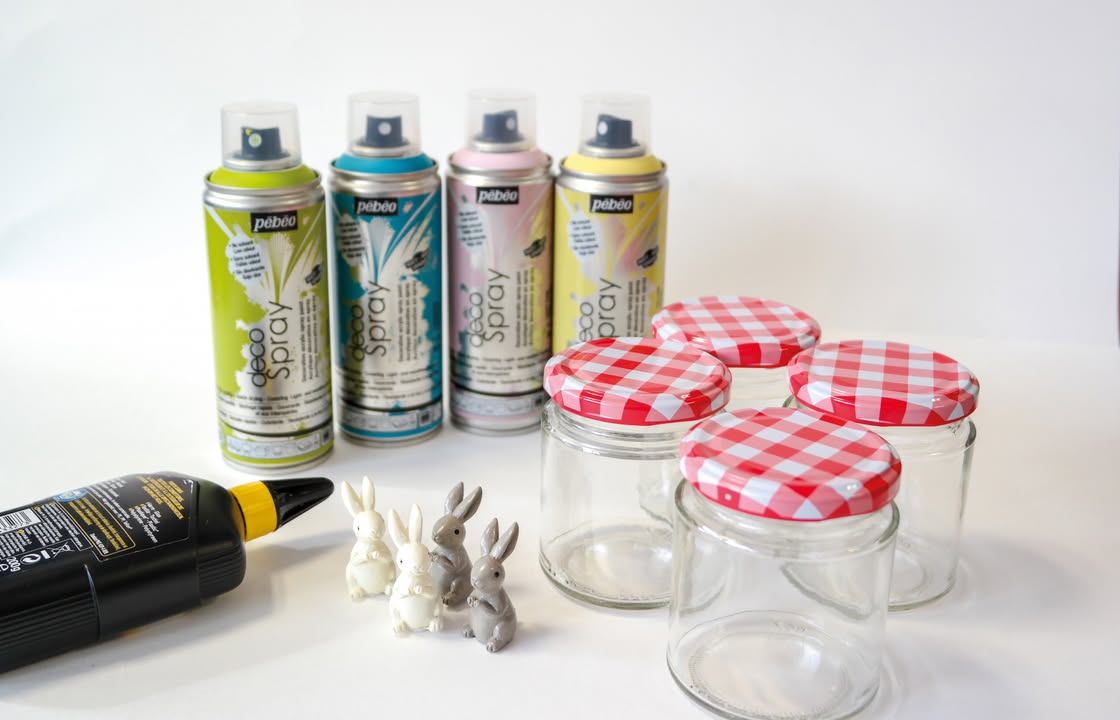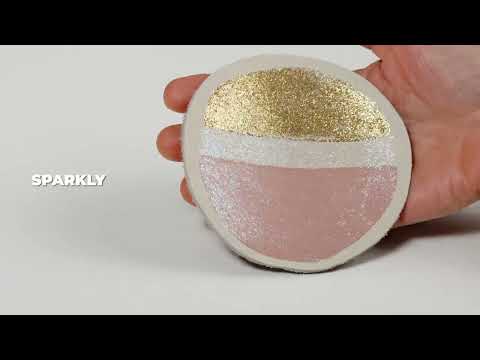HISTOIRE DE PEBEO
Histoire
1919 : La naissance de Pébéo, une esquisse prometteuse
c'est en 1919, sur les terres de Provence, que débute l'histoire de Pébéo Établie à Saint-Marcel, à l’est de Marseille, l’usine est alimentée par le canal du Béal, force motrice qui sera à l’essor de la jeune entreprise d’une vingtaine d’ employés. La compagnie française de produits chimiques se nomme alors “La Pébéo”, d’après la molécule utilisée pour la production de peinture, le protoxyde de plomb, dit “Pbo”. À cette époque, les peintures prêtes à l’emploi ne sont pas encore de ce monde : les pigments n’existent qu’à l’état de poudre, et ne sont destinés qu’aux professionnels.

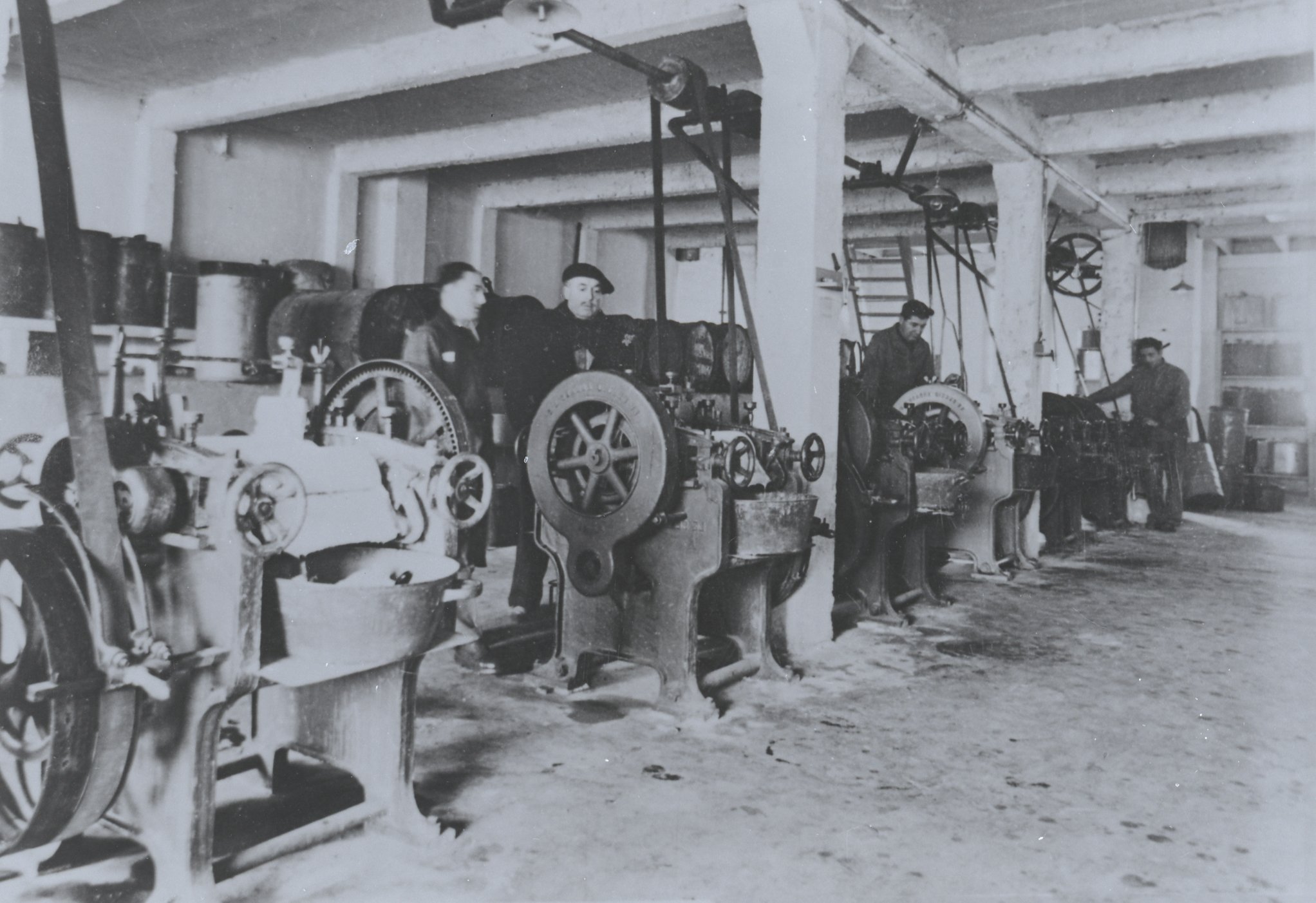
1922 : L’appel de la couleur
1922 marque un premier tournant pour Pébéo avec l’arrivée de Claudius Chaveau. Originaire de Lyon, où il a suivi des études de chimie, Claudius Chaveau fait ses armes dans l’industrie de soierie familiale, puis dans les laboratoires des frères Lumière. Jeune ingénieur visionnaire, il est contacté par l’administrateur de La Pébéo (Dubost), et en deviendra le directeur général en l’espace de quelques années seulement. Animé par le dépassement scientifique et l’inventivité, au service de la création, Claudius Chaveau insuffle à la jeune entreprise ses valeurs fondatrices, désormais transmises de père en fils au fil des générations.

1927 : La prose des couleurs
Tous les matins, dans des claquements de courroies, la roue à aubes de la fabrique marseillaise se met en marche : les blocs de baryte sont réduits en une poudre si fine qu’elle en devient presque impalpable. Ingéniosité alchimique, c’est sous le poids de lourdes meules en porphyre que la magie de la couleur s’opère. Lentement et consciencieusement, les monstres machines mélangent, écrasent et lustrent pigments et baryte, les transformant peu à peu en couleurs homogènes et éclatantes.
C’est aussi l’ère des encres flexographiques et du Mastic, respectivement destinés à l’impression des emballages de café et aux droguistes, vitriers et peintres en bâtiment. Si leur fabrication cessera au début de la Guerre, c'est avant tout par manque de matière première, car leur élaboration répond avant tout à la demande des clients d’antan, une proximité avec le public qui demeurera au cœur de la philosophie de Pébéo.
C’est aussi l’ère des encres flexographiques et du Mastic, respectivement destinés à l’impression des emballages de café et aux droguistes, vitriers et peintres en bâtiment. Si leur fabrication cessera au début de la Guerre, c'est avant tout par manque de matière première, car leur élaboration répond avant tout à la demande des clients d’antan, une proximité avec le public qui demeurera au cœur de la philosophie de Pébéo.
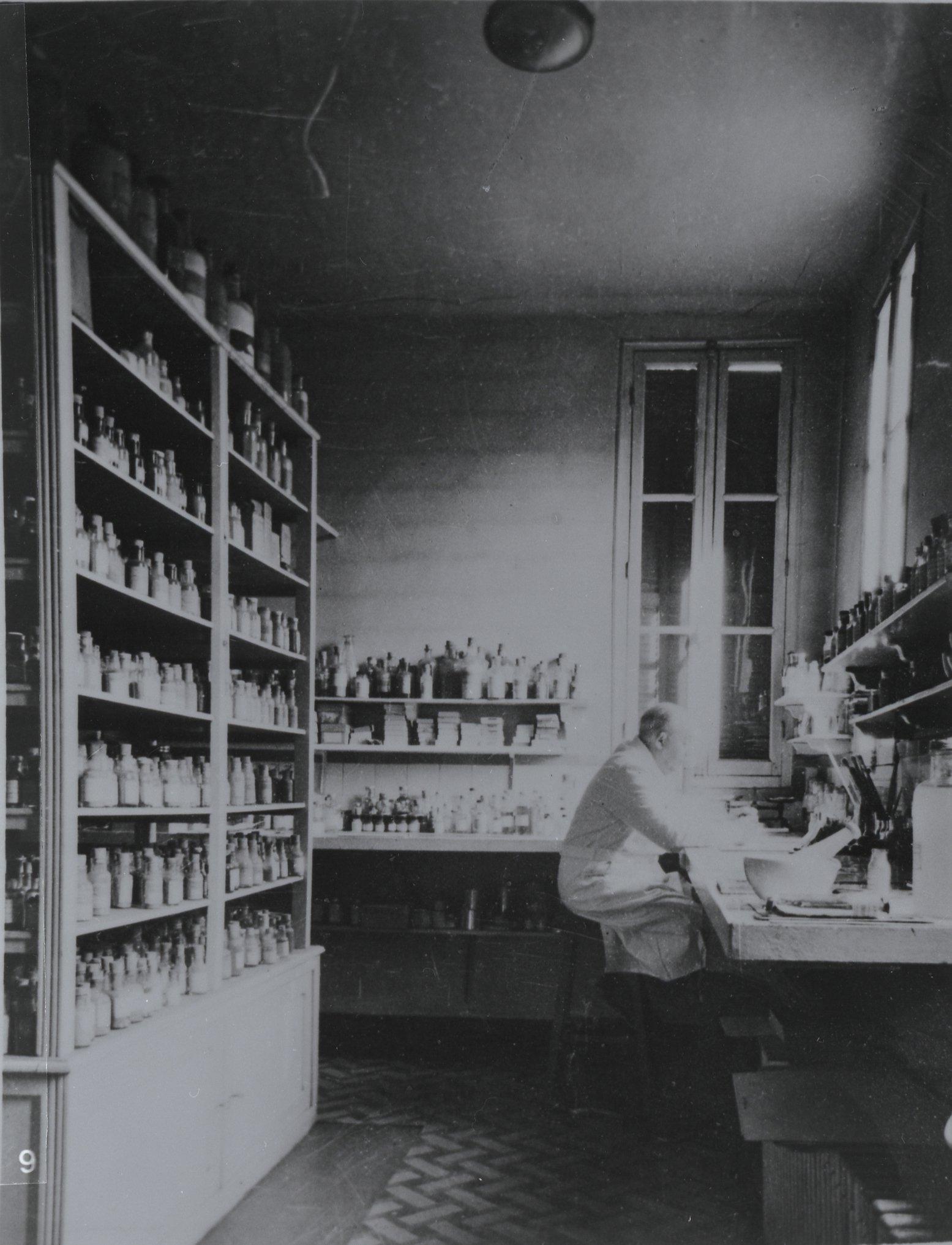
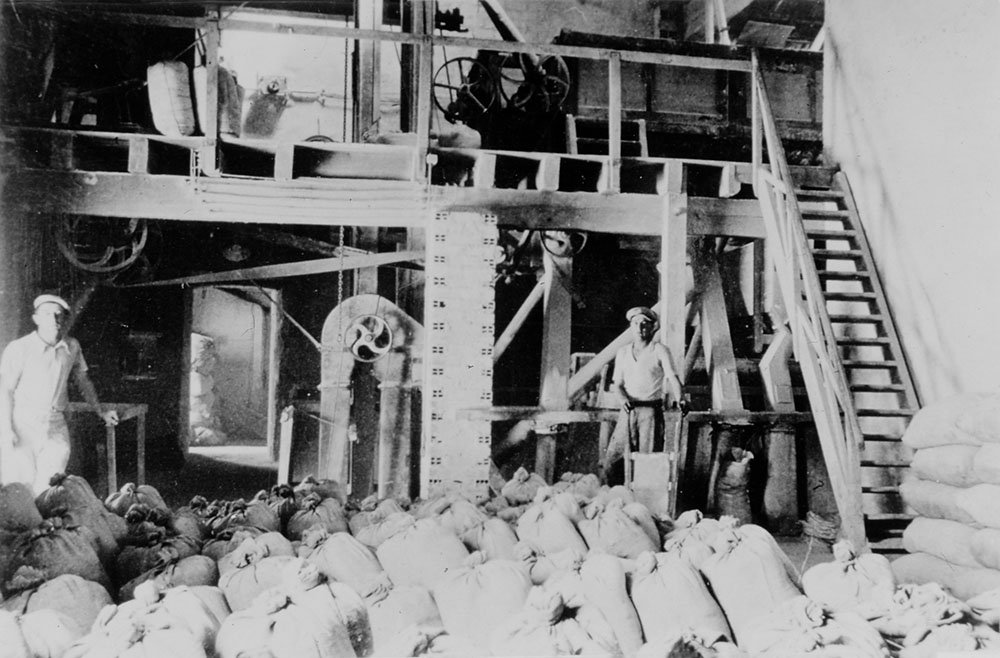
1929 : Le sens de la découverte
À l’aube des années 30, alors que la peinture est encore une affaire d'artisans, Pébéo se tourne déjà vers la recherche. Claudius Chaveau dote l’usine de nouveaux procédés de fabrication qui lui permettront de contourner les aléas de la spéculation sur le cours du plomb métal. Toutes les anciennes fabrications sont remplacées par celles des pigments de “jaune et orange de chrome”, un pigment de forte densité qui manquait jusqu’alors à la palette des peintres, et qui deviendra un outil incontournable dans la peinture impressionniste. Les pigments de cadmium et les laques font aussi leur apparition, tout comme le broyage de couleurs en poudre destinées à l’industrie des peintres en bâtiments. En parallèle, Claudius Chaveau entreprend de créer des peintures résistantes aux conditions extrêmes, en étudiant la résistance des pigments en atmosphère saline, aux rayons du soleil et aux conditions sous-marines. Tous ces essais, bien que non-concluants, permettront à l’entreprise de développer des produits destinés à la signalisation et à la publicité.
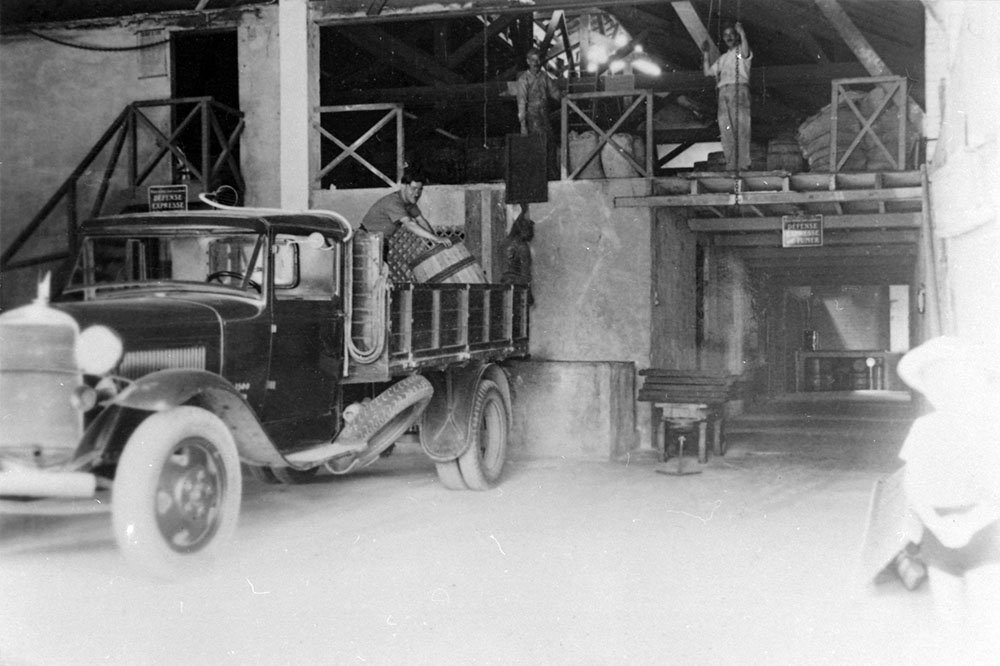
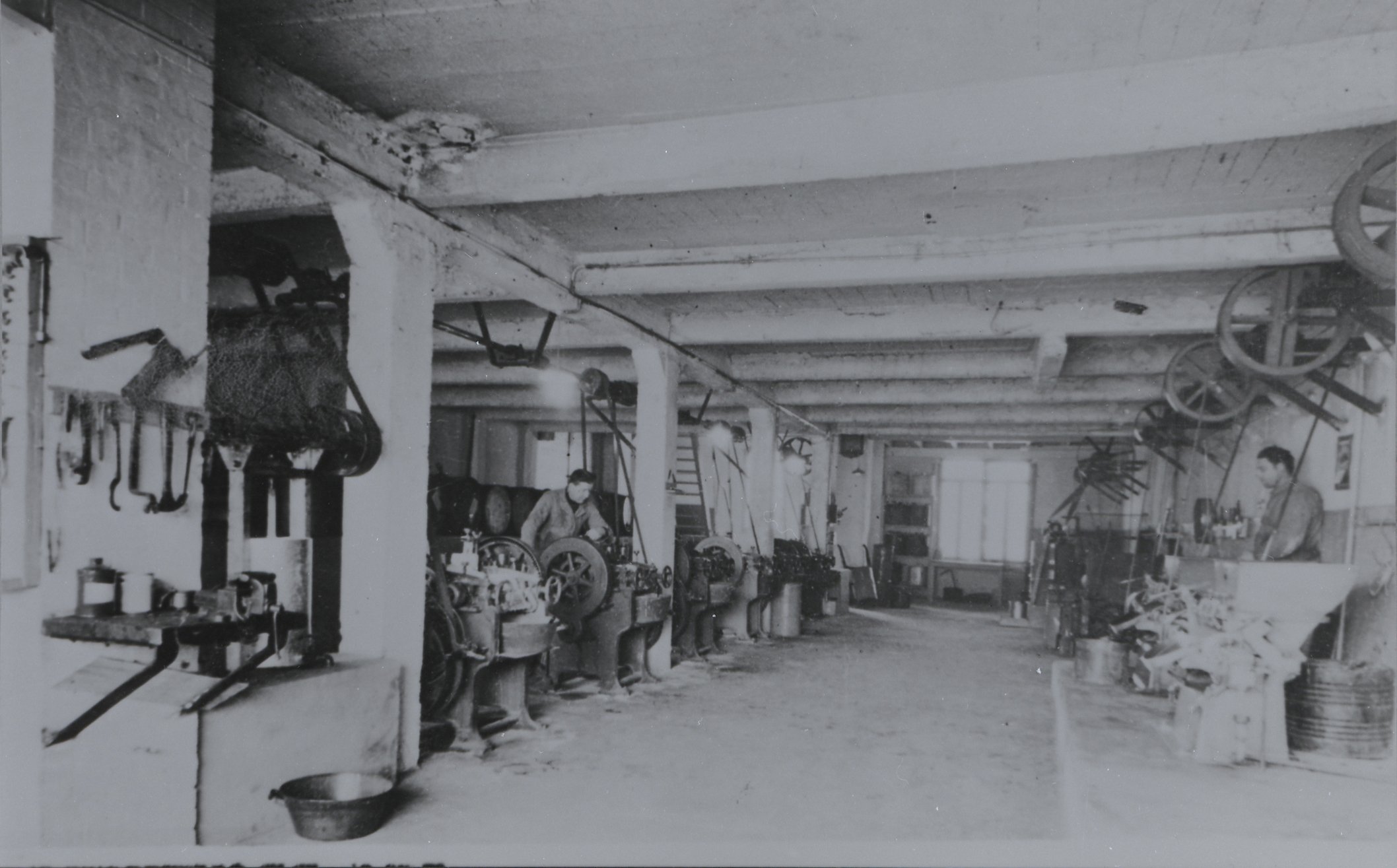
1934 : La couleur à emporter
Pendant des siècles, artistes et artisans préparaient eux-mêmes leurs couleurs, à partir des pigments développés par les rares maisons de peinture. Long et contraignant, ce procédé consistait à empâter les couleurs, les laisser infuser, puis une fois diluées, à les passer au tamis. Mais du dosage au liant, en passant par l’indigence de leur finesse, la méthode était chronophage, approximative et dénuée de moyen de conservation. En 1934, Pébéo met alors au point les premières couleurs “prêtes à l’emploi”, et déclenche au passage une véritable révolution. À l’origine destinés à la peinture en bâtiment, les tubes de peinture à l’huile permettent aux commerces d’antan d’afficher leurs couleurs dans les rues du pays, et à Pébéo de forger sa réputation. Proposés dans 15 couleurs exclusives, ces tubes “prêts à l’emploi” séduisent rapidement les artistes, et sans le savoir, Pébéo fait son entrée dans le monde de l’art

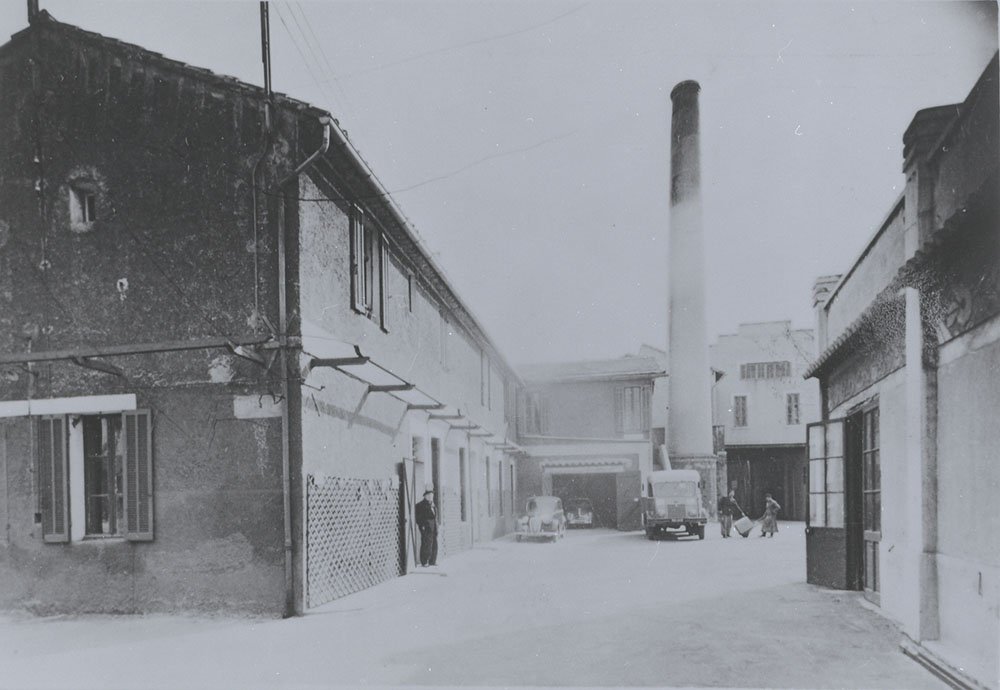
1935 : L’ère des pigments organiques
Apparus dans le courant du 19e siècle, les pigments organiques (de synthèses) prennent de l’essor, remplaçant peu à peu les pigments minéraux. Dès 1935, La Pébéo se tourne vers cette chimie d’avenir, et la fabrique de Saint-Marcel s’imprègne du parfum du Béta-naphtol. La vapeur fuse dans les chaudrons de l’entreprise, où goudron de houille, benzène, naphtalène et anthracène sont distillés afin de devenir pigments organiques : une vaste gamme de couleurs voit le jour. L’année 1935 annonce aussi le début de l’aventure familiale, lorsque le jeune Robert Chaveau découvre les rouages du métier dans les pas de son père Claudius. Qu’à cela ne tienne s’il ne parvient à maîtriser le lourd mortier, inondant son tablier de peinture ! Cette première expérience suffit à attiser sa passion de la couleur, scellant ainsi son destin à celui de l’entreprise.
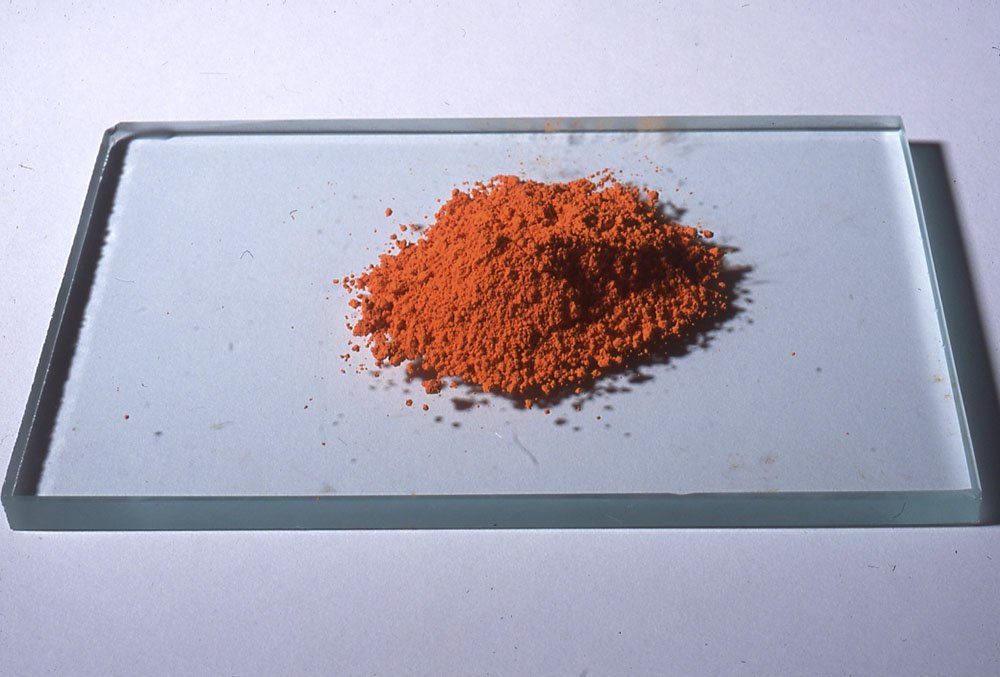

1940: La couleur pour tous
À l’avènement de la guerre, l’industrie toute entière souffre d’une pénurie de matière première. Avec l’aide de son ami Mario de Andreis qui lui souffle l’idée, Claudius Chaveau conjugue chimie et artisanat, en développant les premières pastilles de couleurs. Pauvre en matière première, ce procédé par voie sèche est synonyme de nouveaux horizons pour Pébéo. Destinées aux enfants, ces pastilles sont présentées sous forme de palettes miniatures en carton ou dans de petites boîtes métalliques, qui marqueront une génération entière.
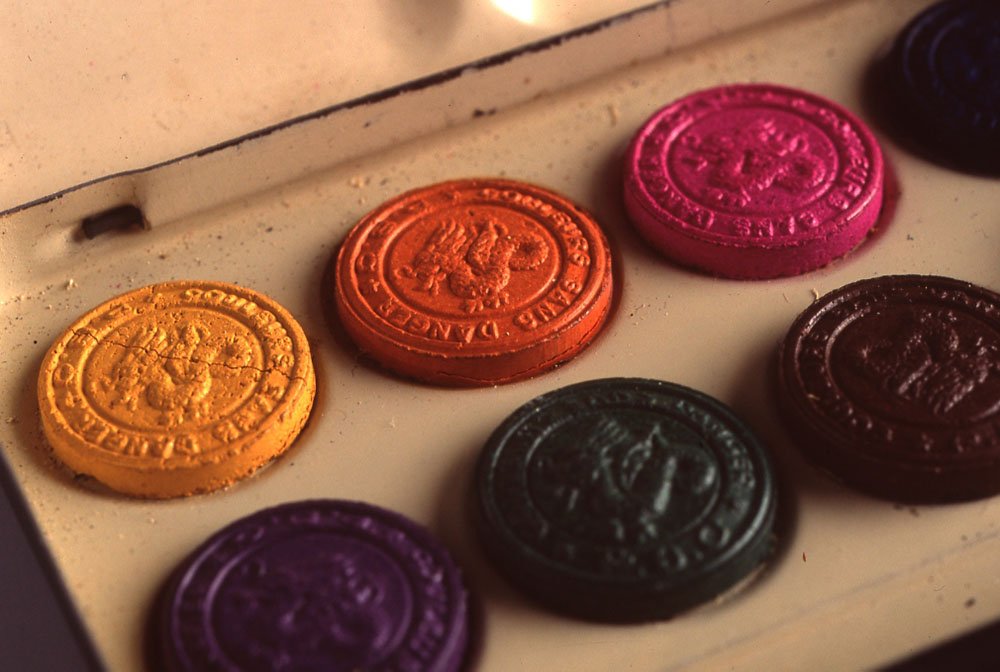
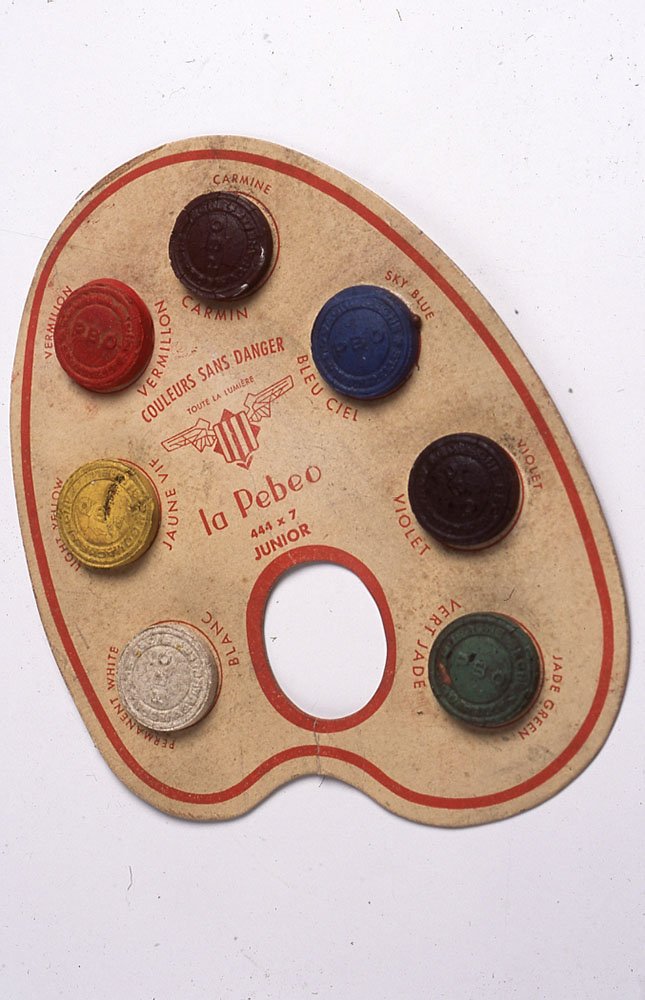
1948 : Godets, Gouache et Aquarelle
Le début des années 50 est synonyme d’une nouvelle aventure pour Pébéo, qui introduit sa gamme scolaire. De la formulation à la fabrication, c’est une toute nouvelle chimie que la maison inaugure. Riches en pigments, offrant une texture et un rendu remarquables, les godets sont un véritable succès. Ils sont rapidement suivis par les gouaches en tube, pour le plus grand plaisir des élèves comme des professeurs de dessin. C’est à cette même époque que Pébéo investit pour la première fois la peinture à l’aquarelle, développée avec l’assistance technique et artistique de l’aquarelliste Charles Blocteur.
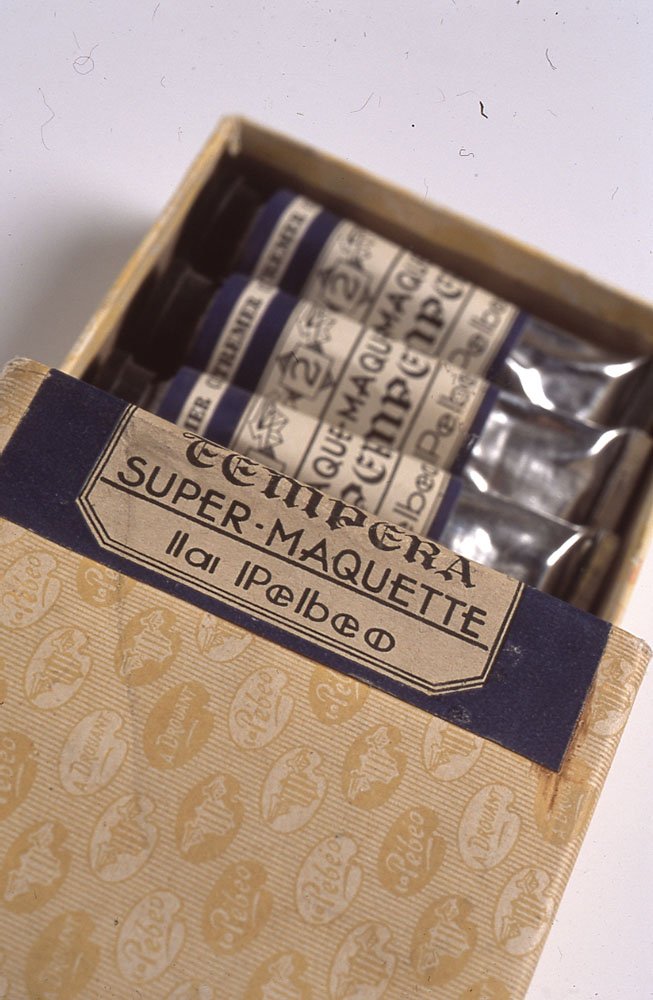
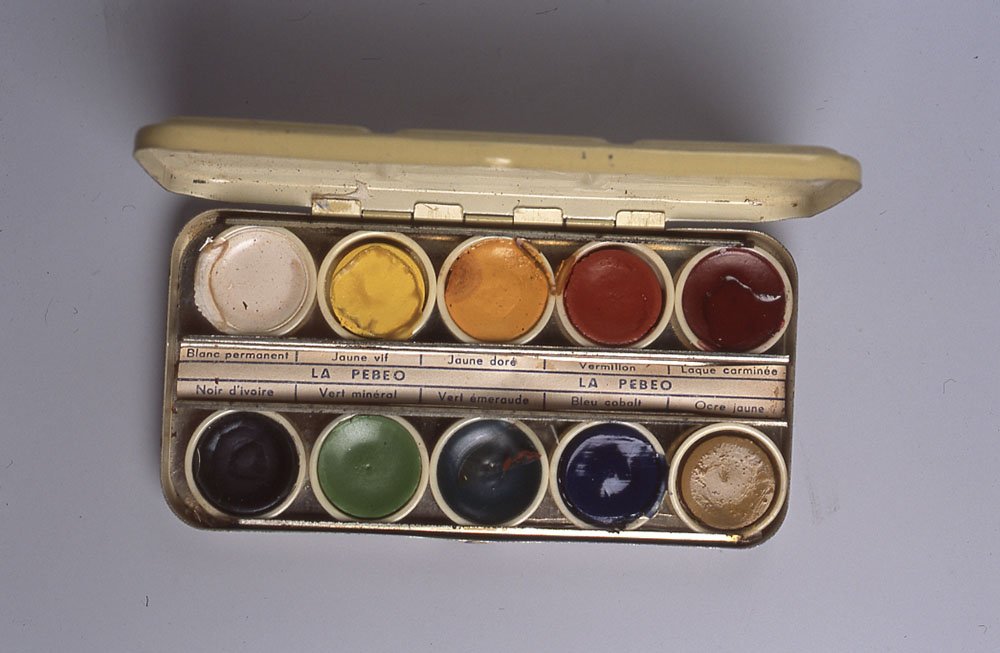
1949 : Avant-gardisme
Dans sa quête de la couleur, Robert Chaveau commence son parcours initiatique au Péano, un lieu emblématique de Marseille, où les peintres reconnus côtoient les artistes en devenir. Il y fait la rencontre de Pierre Ambrogiani, René Seyssaud, ou encore Jean Saussac. À leur contact, Robert met au point une nouvelle formule, correspondant à leurs besoins : la “Super Détrempe”. Souple d'utilisation, forte en pigments, au séchage rapide et à la texture proche de l'huile, la “Super Détrempe” convainc rapidement de nombreux peintres. Pourtant, le succès commercial n'est pas au rendez-vous et, victime de son avant-gardisme, la marque est contrainte d'abandonner son développement. Ce n'est que 29 ans plus tard qu'un produit semblable apparaîtra sur le marché : l'acrylique.

1950 : L'éveil de Pébéo
Claudius Chaveau fait la rencontre de Célestin Freinet, instituteur et initiateur de l'Ecole Moderne, dont la pédagogie est basée sur l’éveil de l’enfant. Ce dernier s’était par le passé essayé à l’encollage des couleurs en poudre avec de la gomme arabique, avait tenté de les plastifier, ou encore de les délayer en y ajoutant du produit vaisselle. Las de ne pas obtenir le résultat escompté, il se rend jusqu'à l'usine de Pébéo, afin d’en rencontrer le directeur. Ensemble, ils imaginent un nouveau type de gouache : la gouache liquide. Plus élaborée que sa version poudre, elle est aussi beaucoup plus pratique à utiliser, car sans préparation. Conditionnée en larges contenants, elle s'avère parfaitement adaptée aux cours de peinture et à l’emblématique expression libre de l'Ecole Moderne. Le dialogue entamé entre les deux hommes ne cessera jamais : leur entente sera à l’origine de l’éveil artistique de milliers d’écoliers, et sera décisive dans l'histoire de Pébéo
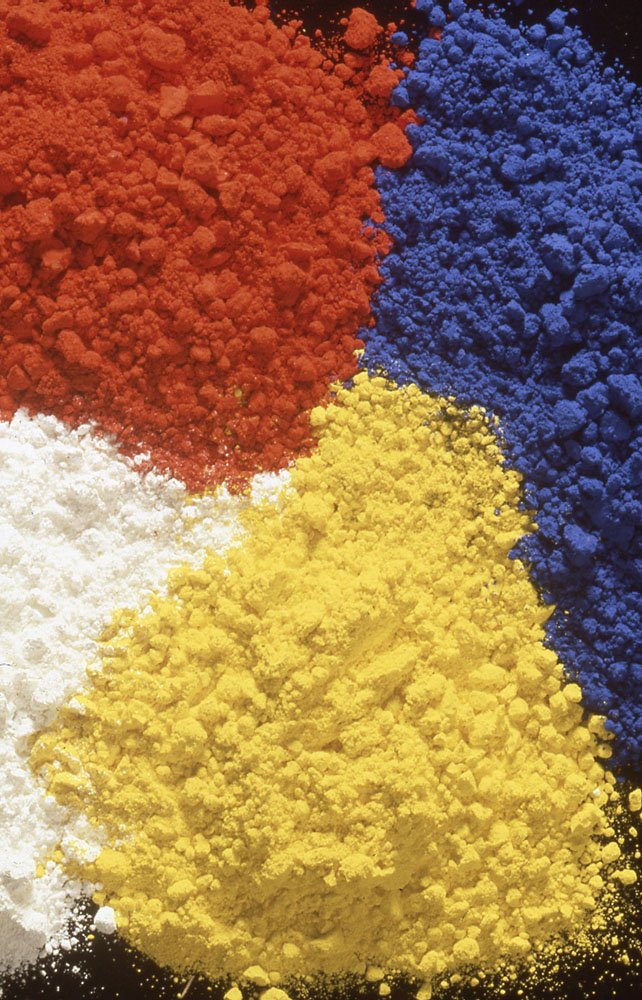
1952-1953 : Le monde de la couleur fine
En 1952, une nouvelle rencontre vient sceller le destin de Pébéo. Peintre et galeriste de renom, Armand Drouant est aussi fabricant de couleurs fines à l’huile. Mais si des artistes tels que Braque, Gromaire, Soutine, Buffet et Van Dongen se succèdent dans sa galerie parisienne, il est contraint de cesser son activité industrielle. À travers la reprise de sa fabrique, Pébéo fait l’acquisition de son savoir-faire et accède aux secrets de cet univers. « Après avoir été empâtée dans les malaxeurs à bras, la couleur est affinée sur des broyeuses tri-cylindriques : sa finesse est proportionnelle à la pression exercée sur les cylindres et au nombre de passages. Elle subit ensuite des contrôles qualité en cours de fabrication et avant son conditionnement… » Désormais doté de malaxeurs et autres broyeuses en granit, Pébéo peut enfin se développer dans le secteur de la couleur fine. Dès 1953, la gouache extra-fine à l’huile “Fragonard” est introduite, suivie de la gamme vernis Beaux-Arts. 1953, c’est aussi les débuts de Robert Chaveau, qui intègre officiellement l’entreprise. Il prend le parti d’enrichir l’offre de pigments organiques, inaugurée quelques années plus tôt. Son enthousiasme pour la couleur marquera l’histoire de la maison : de sa fabrication, il parlera d’une “étreinte amoureuse”, où “les solutions filtrées et coulées (...) se fondent l’une dans l’autre pour devenir pigment”.

1960 : L’aventure textile
1960 accueille une nouvelle révolution Pébéo, avec le lancement de la gamme de peinture pour tissus : “Setacolor”. Jusqu’alors, les rares produits en la matière n’étaient pas au point. En adaptant les pâtes d’impression alors utilisées dans l’industrie textile, Pébéo devient virtuose de la couleur sur tissus et se démarque jusque dans les îles pacifiques. Sous la brise des alizées, les couleurs chatoyantes de Pébéo, constellées de paillettes, de nacre et de fluorescence charment les vahinés qui en ornent leurs paréos. C’est la consécration de la photo-solarisation, un procédé qui consiste à appliquer une couleur diluée sur un voile de coton tendu, avant d’y appliquer des caches de divers motifs. En exposant le tout au soleil, les empreintes apparaissent alors en tons pastels négatifs, contrastant avec les surfaces exposées au soleil, saturées de couleurs.

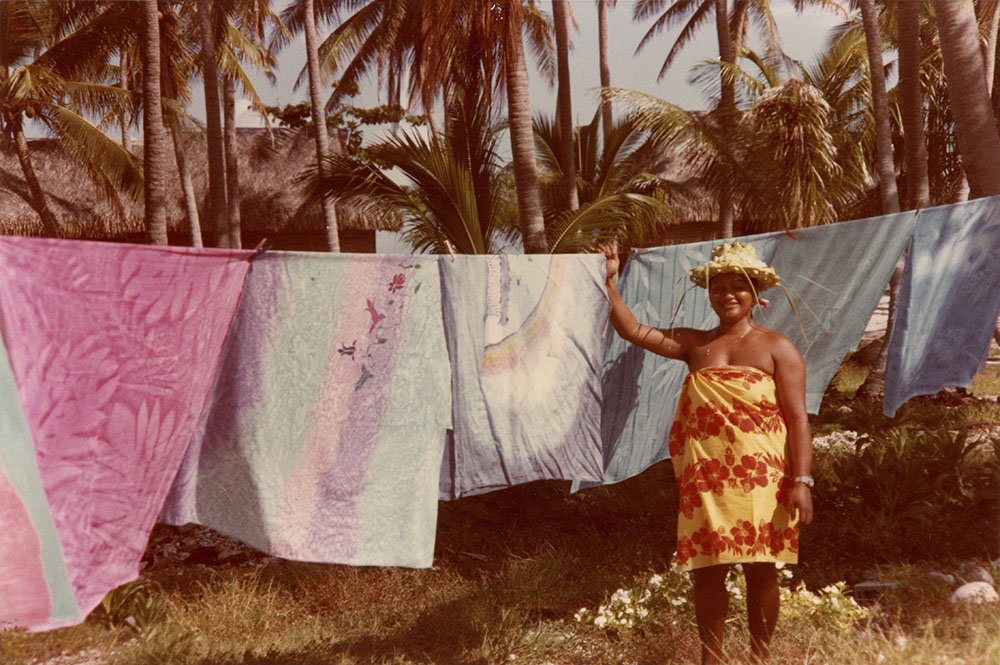
1961-1965 : À la découverte de la matière
Incités par le désir de se démarquer de la concurrence, les laboratoires de Pébéo redoublent d’imagination et d’inventivité : gouache ultra-concentrée à diluer, gouache au doigt (“Tactilcolor”), feutre à dessiner, ou encore peintures “Primaires” (inspirées du principe de trichromie d’Isaac Newton)... Ces avancées sont suivies des marqueurs rechargeables, qui exaltent artistes en herbe et confirmés, comme le peintre américain Gordon Onslow Ford, qui passera même par l’usine pour complimenter Robert Chaveau sur leur résistance à la lumière. À cette époque, Pébéo ne cesse d’étudier la matière, de chercher à en comprendre les propriétés, jusqu’à parvenir à l’imiter. Cette passion sans équivoque conduira les chimistes de la maison à réussir une série de tours de force dans les pratiques ancestrales de la céramique et du vitrail. Fasciné par les techniques qu’il a découvertes dans les ateliers du peintre et céramiste Salvado, Robert Chaveau développe les premières peintures céramique La Pébéo, dont la résine à la dureté exceptionnelle offre des sous-couches, couvertes et reliefs hautement décoratifs. S’en suivront les couleurs et vernis vitrail, elles aussi inspirées d’une rencontre fortuite. Non loin de l’usine de Saint-Marcel, un certain Chauvel, alias Frère Antoine, vient à la rencontre de Claudius Chaveau : il est à la recherche d’une solution ingénieuse et peu onéreuse pour les vitraux de son église de la Valbarelle. La collaboration entre les deux hommes mène au développement d’une nouvelle gamme, et Pébéo ajoute une nouvelle corde à son arc.
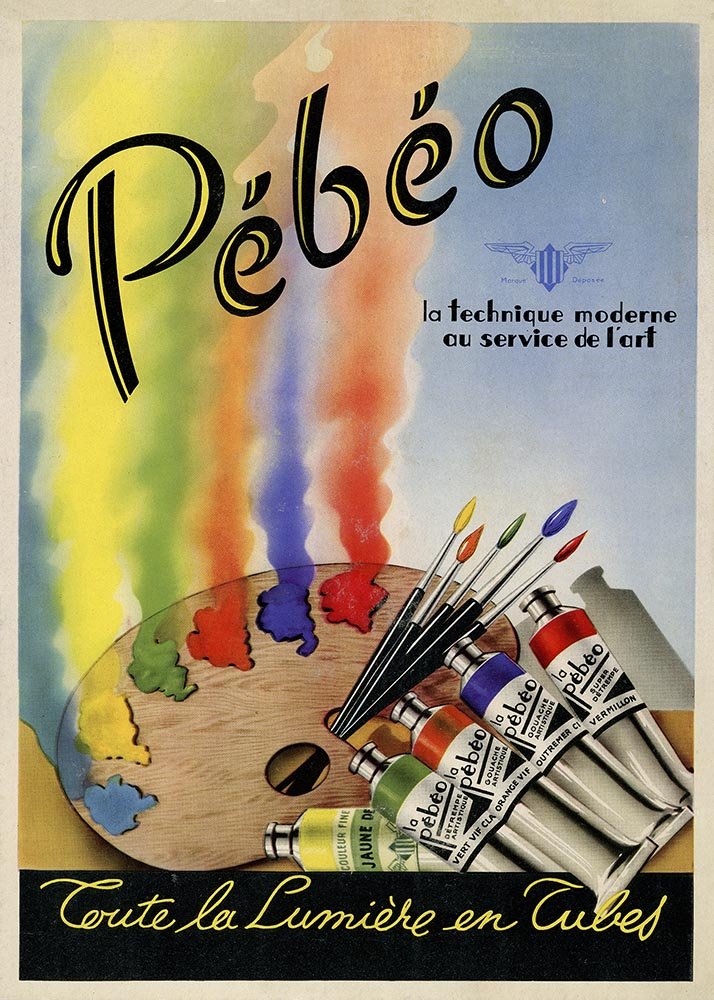
1969 : La conquête graphique
Alors que son département scolaire s’étoffe, La Pébéo désire améliorer la tenue de ses feutres et cherche conseil auprès d’un secteur en plein essor : les studios graphiques. Claude Merle, imprimeur, photograveur et créatif de talent, incite la maison à créer un département Arts Graphiques. Leur collaboration conduira à de nombreuses innovations comme l’encre à dessiner, l’encre de Chine, ou la célèbre “Drawing-gum”, une gomme à dessiner inédite qui rencontre un succès intergénérationnel. C’est aussi les débuts de la gamme pour retouche photos couleur et noir & blanc, qui connaîtra son apogée dans les années 80.
1970 : La Pébéo devient Pébéo
En cette nouvelle décennie, Pébéo garde son ton, mais perd son La. C’est le temps du renouveau. Tout comme l’artisanat a laissé place à la chimie de pointe, le marketing gagne du terrain, et le vent de la mondialisation incite les dirigeants à repenser l'appellation de l’entreprise. Jusqu’alors identifié à une figure féminine et à une affaire familiale, la nouvelle identité de marque permet à Pébéo d’accroître sa visibilité et de repousser ses frontières.

1975 : Une croissance raisonnée
Alors que Pébéo passe le cap de la centaine d’employés, l’heure est à la restructuration de son activité. Face à la montée de la concurrence internationale, la maison fait le choix de mettre un terme à la fabrication de pigments, et concentre ses efforts sur l’approfondissement de sa gamme Beaux Arts. Les innovations se poursuivent avec l’aquarelle extra-fine. Riche en pigments, offrant une dilution et une souplesse exceptionnelle, ce procédé de couleur “moite” rencontre un succès immédiat.
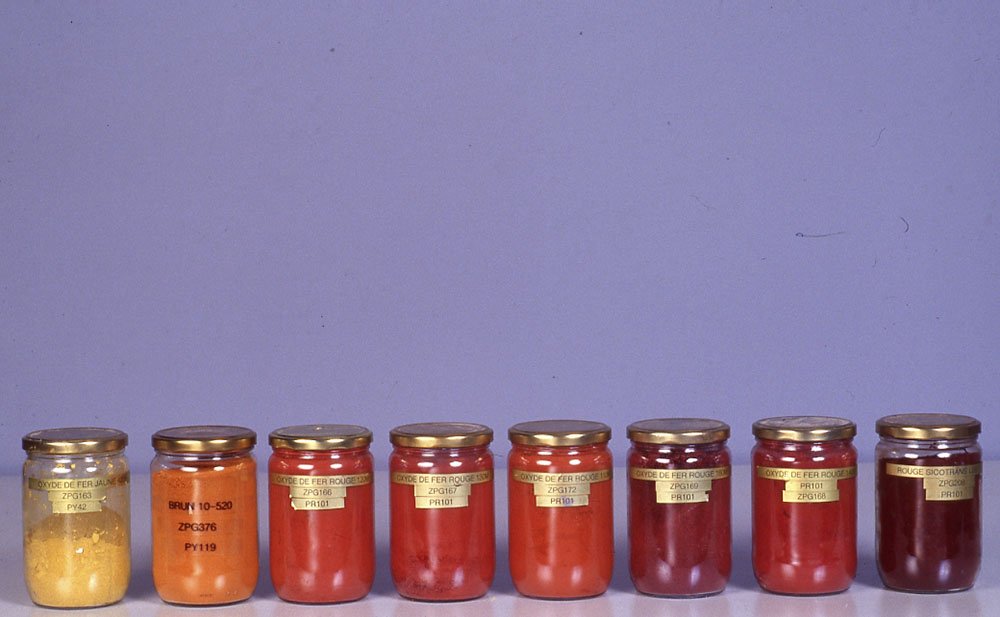
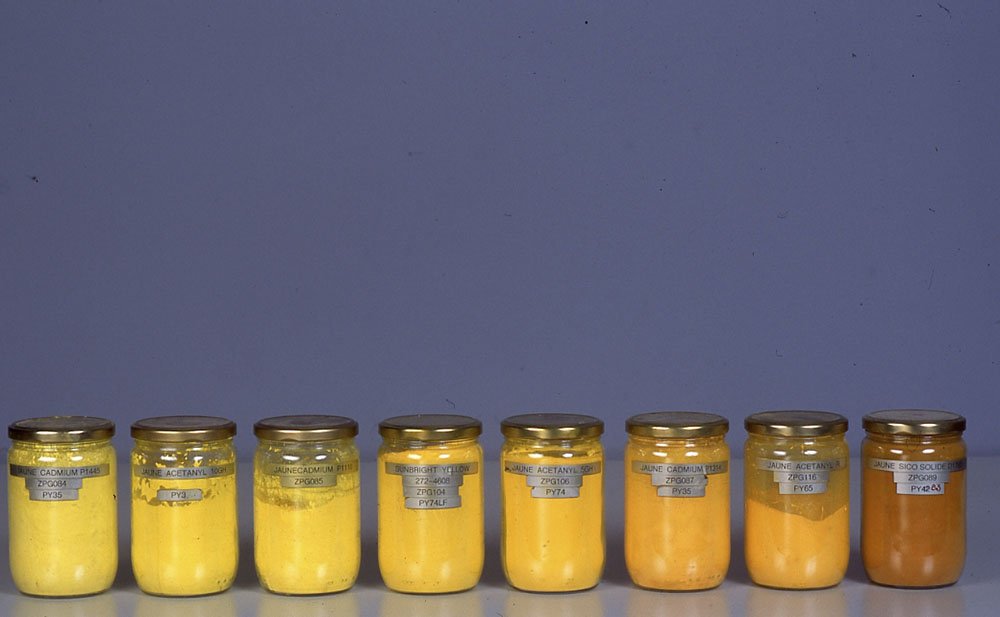
1977: Pionnier du Made in France
Né au Mexique dans les années 50, l’acrylique est le fruit d’une collaboration entre des chimistes et des peintres, à la recherche d’une peinture souple et résistante aux UV qui leur permettrait de réaliser des fresques avec davantage d’aisance. Se diluant à l’eau et séchant très vite, l’acrylique libère l’artiste de toute contrainte, qui peut désormais laisser libre cours à sa fougue créatrice.Faisant écho à la modernité et au dynamisme de Pébéo, c’est sans surprise que la maison se lance dans sa fabrication. En 1977, Pébéo propose le premier acrylique entièrement produit dans l’hexagone, s’imposant comme pionnier du Made in France. Sa présentation s’accompagne d’un concours national : le Prix Acrylic, qui révélera des artistes comme Gérard Lainé, Jean Gasnault, Nicole Bottet ou encore Jean-Jacques Surian.
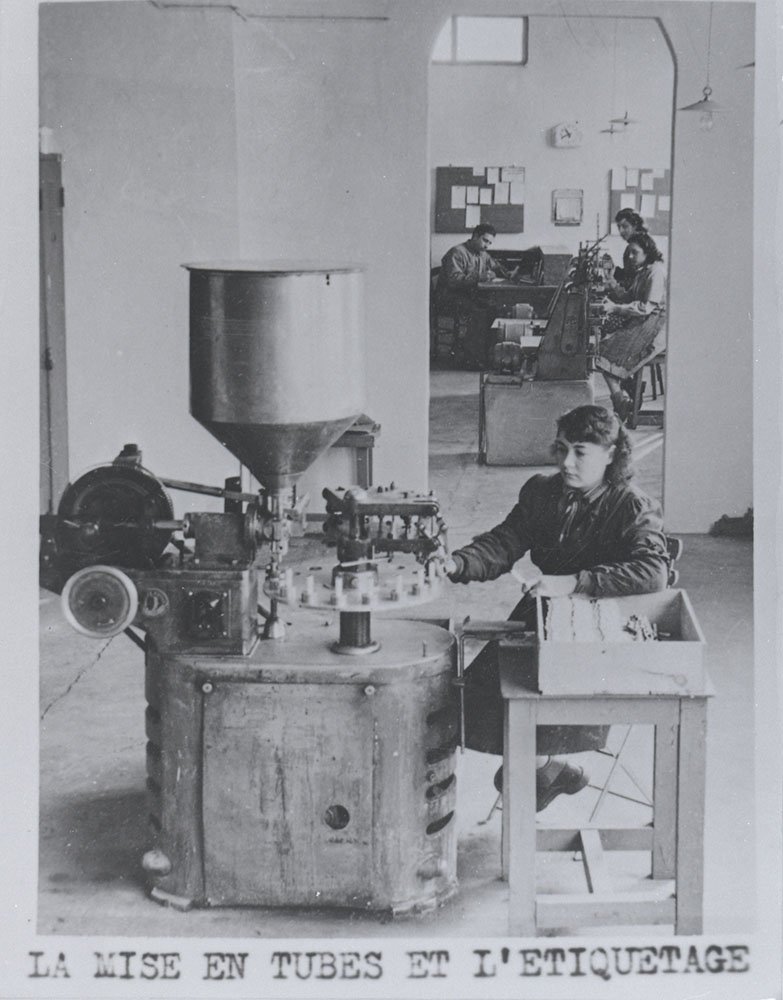
1981-1983 : Le tournant international
Établi dans les pays du pourtour méditerranéen et dans les pays francophones, où sa gamme scolaire est très populaire, les années 80 ouvrent de nouvelles perspectives pour Pébéo : l’esprit du temps est au développement international. L’arrivée d’Eric Chaveau (fils de Robert et petit-fils de Claudius) au sein de l’entreprise, marquera un tournant dans la présence de Pébéo à l’étranger. Après des études d’ingénieur-chimiste et de management, il s’attelle à développer la stratégie d’export de l’entreprise.L’objectif ambitieux sera un succès : en quelques années seulement, Pébéo parvient à bâtir un réseau de distribution fiable, adaptant son offre aux différents pays, sans pour autant compromettre ses valeurs et la qualité de ses produits.
L’époque est marquée par une croissance internationale exponentielle, où 40% de la production est alors destinée à l’export. L’ambition d’engendrer une dynamique pérenne autour de Pébéo conduit à la création de filiales au Danemark, en Italie et aux Etats-Unis.
L’époque est marquée par une croissance internationale exponentielle, où 40% de la production est alors destinée à l’export. L’ambition d’engendrer une dynamique pérenne autour de Pébéo conduit à la création de filiales au Danemark, en Italie et aux Etats-Unis.

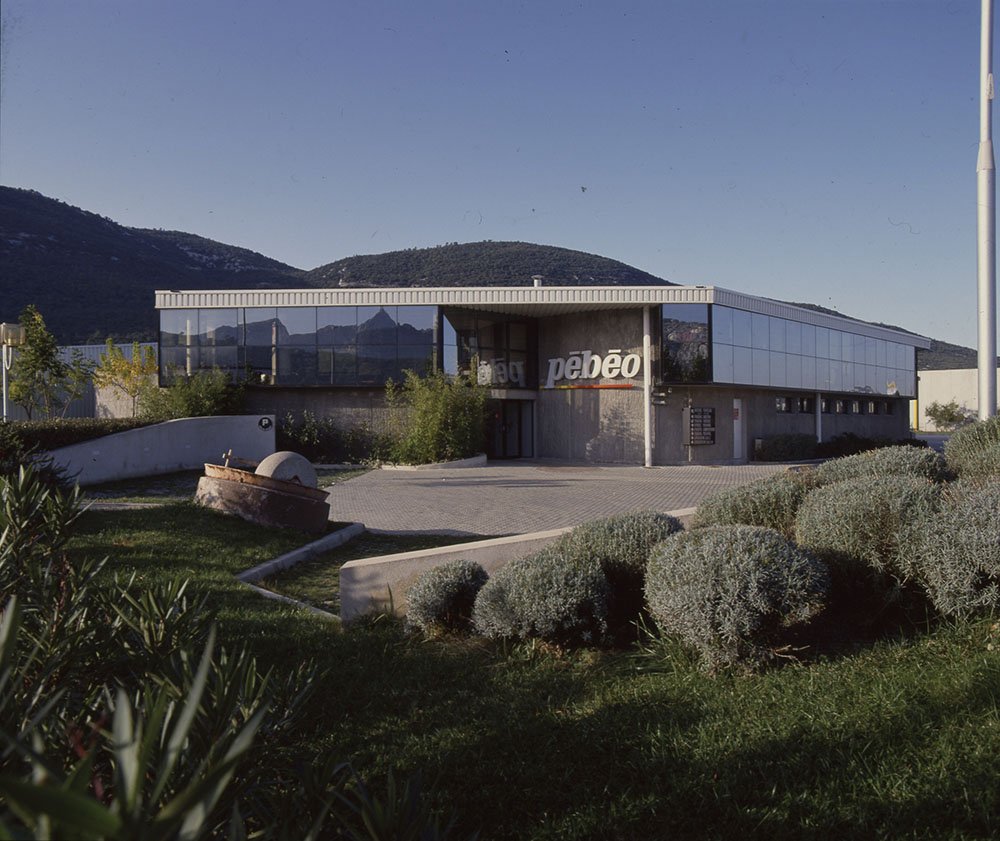
1989 : Nouveau siège et nouveaux horizons
Alors que le département export s’étoffe, les laboratoires de Pébéo sont à l’étroit. Le succès de l’offre Pébéo à travers le monde, et la cadence soutenue de production qui en découle imposent à l’entreprise de repenser ses murs. Si l'héritage de Pébéo est à Saint-Marcel, son futur sera à Gémenos. Conçu par l’architecte Maurice Sauzet, le nouveau siège de Pébéo s’inspire de l’architecture nippone. Fenêtre sur les reliefs de Gémenos et sur le monde, il est le reflet de la modernité et des valeurs innovantes de l’entreprise. Pensé autour de la qualité de travail comme de vie, la qualité de son agencement offre un nouvel élan à Pébéo.

1993: Innovation et Recherche
Pour Pébéo, la décennie 90 démarre par le prix de l’innovation de la Namta, grâce au premier tube plastique transparent au format 100 ml, destiné au conditionnement de l’acrylique. En parallèle, une autre avancée est en train de révolutionner l’industrie : l’informatique. De nombreux produits distribués deviennent caducs, entraînant ainsi la fermeture du département graphique de Pébéo.
Aussi bien attaché aux techniques ancestrales qu’à la recherche de pointe, le laboratoire de Pébéo lui vaut d’être sélectionné pour le programme de recherche de la Commission européenne: “Crisatel”. Aux côtés des laboratoires du Louvre et de la National Gallery of London, Pébéo participe ainsi à la conception d’un système de stockage et de gestion d’images en haute définition, qui permet désormais d’accéder de façon non-destructive aux couches picturales de précieuses œuvres d’art
Aussi bien attaché aux techniques ancestrales qu’à la recherche de pointe, le laboratoire de Pébéo lui vaut d’être sélectionné pour le programme de recherche de la Commission européenne: “Crisatel”. Aux côtés des laboratoires du Louvre et de la National Gallery of London, Pébéo participe ainsi à la conception d’un système de stockage et de gestion d’images en haute définition, qui permet désormais d’accéder de façon non-destructive aux couches picturales de précieuses œuvres d’art
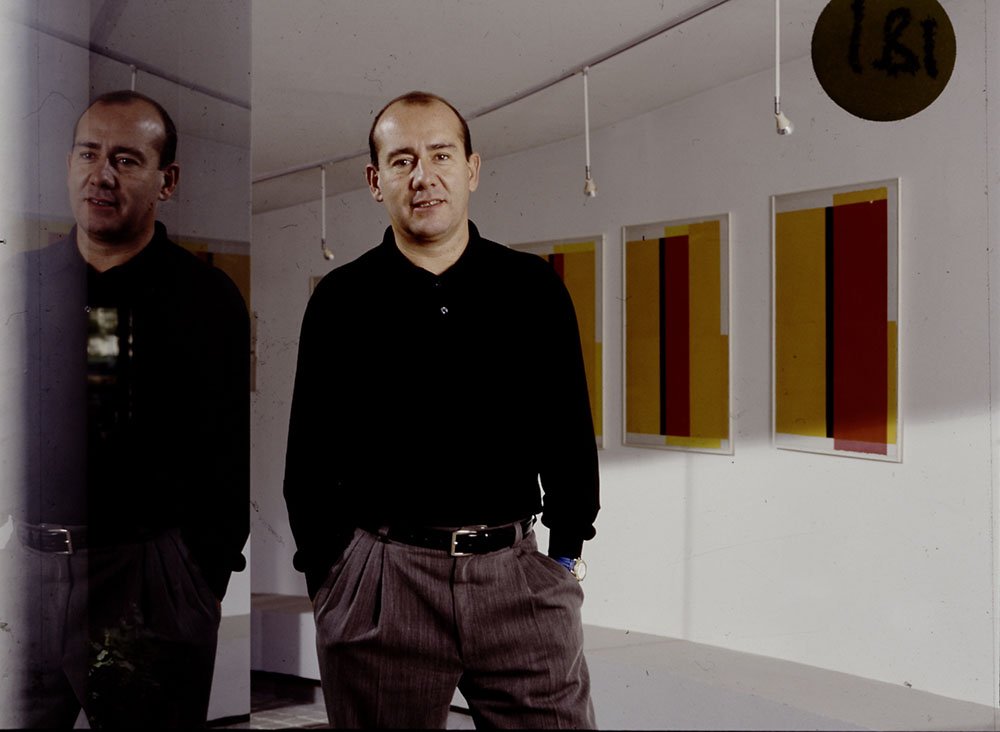
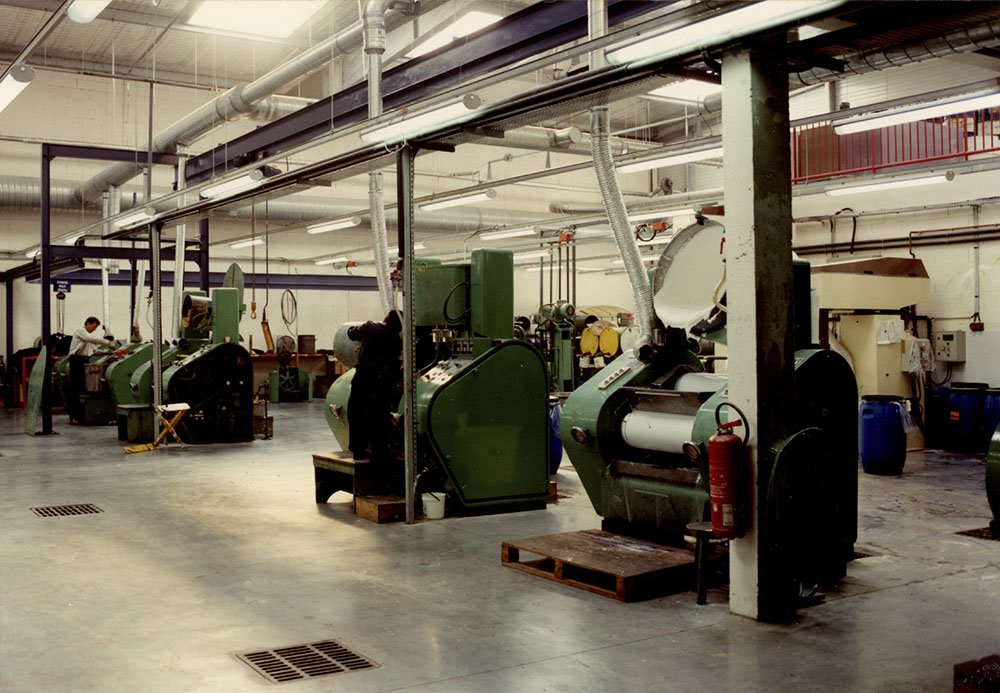
1995 : Tradition et renouveau
À la tête de l’entreprise, Eric Chaveau succède à Robert, son père. Son mot d’ordre sera plus que jamais dévoué à l’innovation et à la créativité : “Nous n’avons pas peur de prendre des risques. Les artistes en prennent plus que nous, et nous devons être à la hauteur de leur rêve.”Pébéo devient de ce fait le leader français de la couleur pour les arts, l'enseignement et les loisirs : annuellement, la marque produit désormais 1 500 tonnes de peinture, sous la forme de 3 500 références, 10 millions de tubes et le même nombre de flacons.
1995 marque aussi l’inauguration du second site de Gémenos, qui, parmi ses 5 000 m2, accueille un laboratoire de dernière génération. De son côté, l’ancien site se transforme en vitrine de l’offre proposée et permet à la maison de développer ses actions de mécénat, à travers la mise en place d’un espace d’art contemporain.
1995 marque aussi l’inauguration du second site de Gémenos, qui, parmi ses 5 000 m2, accueille un laboratoire de dernière génération. De son côté, l’ancien site se transforme en vitrine de l’offre proposée et permet à la maison de développer ses actions de mécénat, à travers la mise en place d’un espace d’art contemporain.
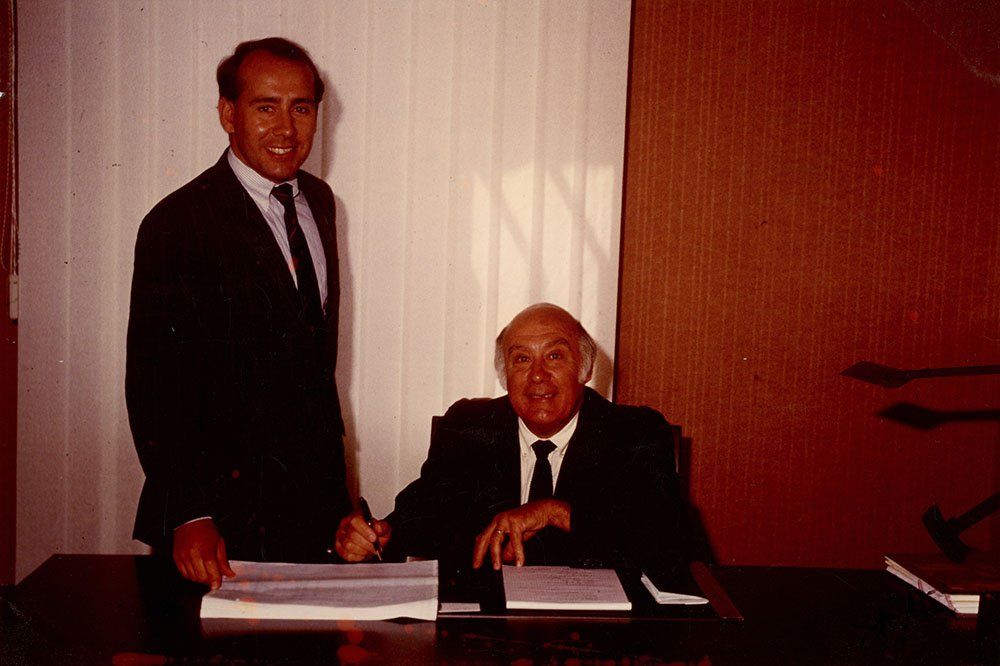
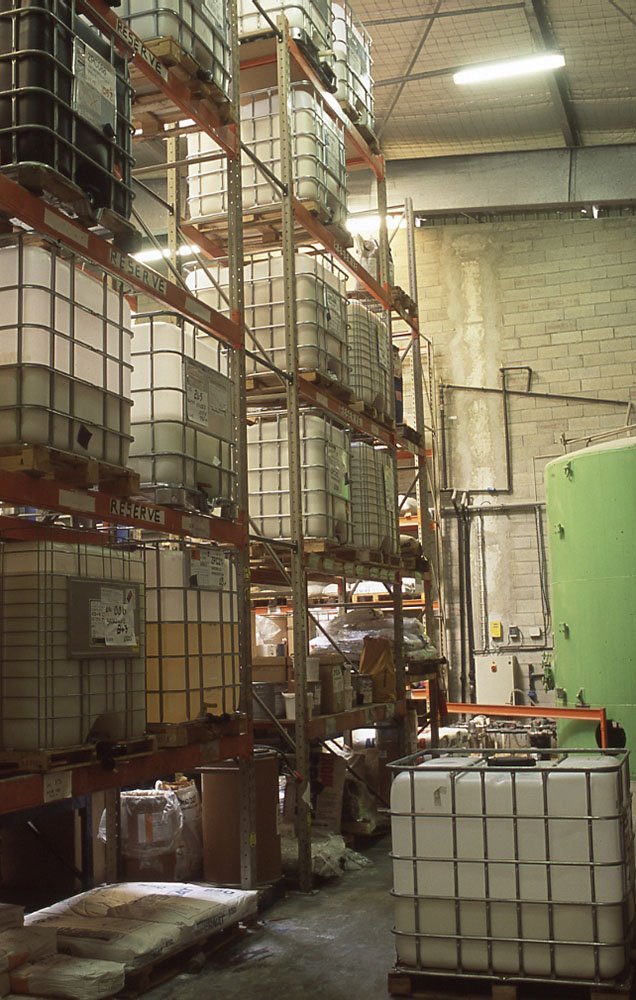
1996 : L’Estivale Pébéo
Portée par la volonté de faire vivre l’art et de le faire voyager, l’entreprise invite pour la première fois des étudiants d’écoles d’art du monde entier. Réunis autour d’un thème commun, la maison leur propose un support d’expression inédit : des conteneurs ! L’événement : l’Estivale de Pébéo, se déroule en direct sur 3 jours, sur les plages de l’Escale Borely à Marseille. Les œuvres d’art “flottantes”, porteuses d’espoir et messagères de la créativité, voyagent sur tous les continents, de Marseille à Hong Kong en passant par Hambourg, Abidjan ou Bora-Bora. La même année, Pébéo reçoit le prix Cézanne de la logistique pour la refonte complète de sa chaîne d’expédition, optimisant de 60% son efficacité : les 6 000 références déjà proposées seront désormais expédiées depuis la maison mère.
2000-2005 : Pébéo et le Soleil Levant
Face à la demande et afin de s’adapter à un monde aux distances désormais réduites, Pébéo s’organise : une nouvelle unité de production est lancée en Tunisie, dans la région de Zaghouan, qui participe au conditionnement et à l’assemblage des produits fabriqués à Gémenos. Grâce à ce nouveau département, les produits de la gamme scolaire, aux fondements de l’histoire de Pébéo, mais dont la rentabilité était désormais en baisse, peuvent continuer de ravir les élèves du monde entier. Cette dynamique internationale se concrétise par la création d’un site de production à Kunshan, situé à 50 km de Shanghai, sur le même modèle que l’usine mère de Géménos. L’implantation en Chine est un succès et, dès 2005, Pébéo reçoit les honneurs de sa ville d’adoption de Kunshan. Parfaitement optimisés et pensés à taille humaine, ces nouveaux points d’ancrage conduisent au développement de produits devenus emblématiques comme les coffrets “Atelier”, la gamme “Arti’stick”, ou encore “Touch” : un stylo multisupport dont les variantes crystal, gloss, volume, pearl et métal offrent des applications infinies.Parallèlement à son expansion internationale, Pébéo ne délaisse pas pour autant ses racines : l’immersion dans le milieu des arts, au cœur du bassin phocéen. En 2003, la maison contribue ainsi à la fondation de l’association “Mécènes du sud”, dont l’objectif est d'offrir, à travers une action collective innovante, une aide alternative aux projets artistiques. Convaincu que la création contemporaine nourrit l’imaginaire collectif et l’innovation, Eric Chaveau en devient président en 2005.
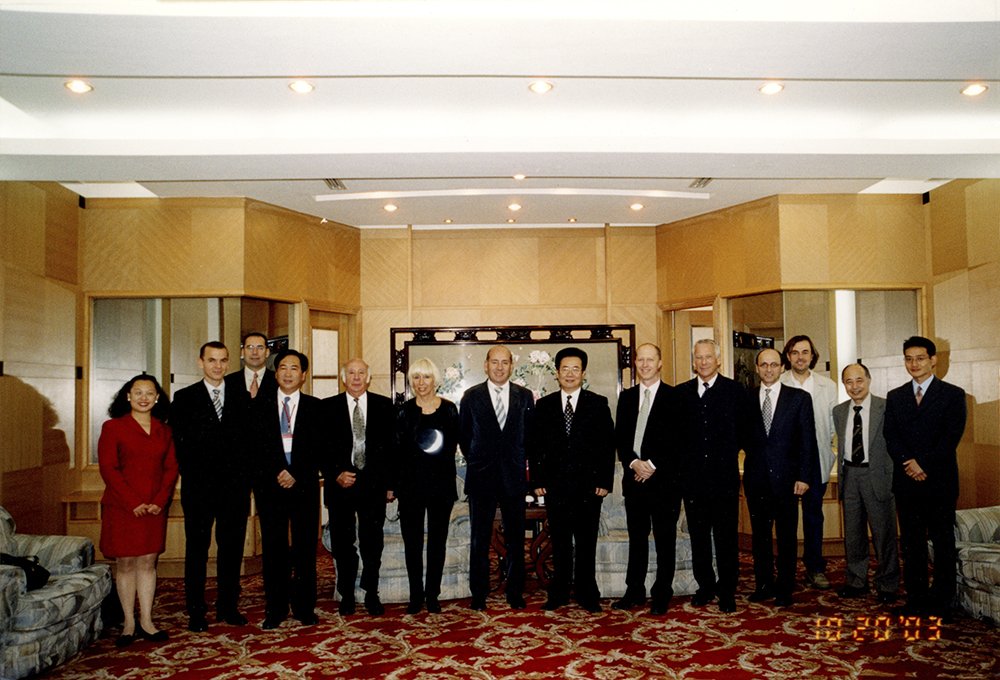
2007: Le sacre de Pébéo
Pour Pébéo, l’année 2007 est placée sous le signe de la distinction. Sacrée meilleure PME française en Chine, Pébéo est également labellisée “Entreprise du Patrimoine Vivant” : une marque de reconnaissance de l’Etat qui récompense les entreprises françaises aux savoir-faire artisanaux et industriels d’excellence. Pour la maison, cela vient consacrer 80 ans de qualité, d’innovation au service de l’art et de la créativité. C’est aussi mettre à l’honneur les hommes et les femmes derrière le succès de Pébéo : d’insatiables passionnés s’attachant à créer bien plus que des pigments
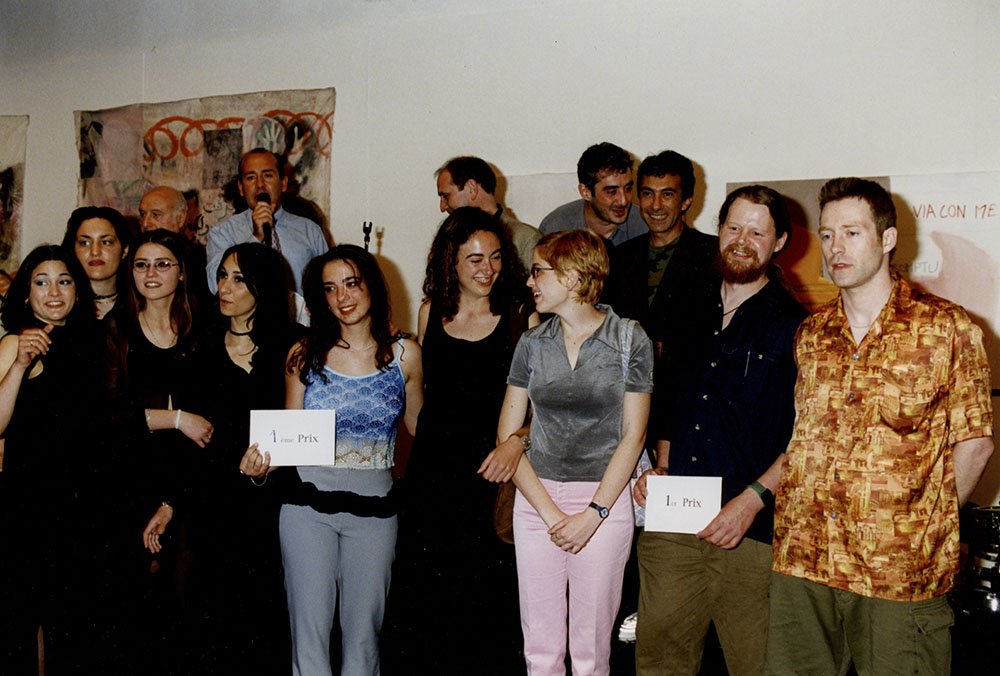
2009: Des innovations au service de l'imagination
L’époque est porteuse d’une nouvelle tendance : la décoration intérieure. Jusque-là réservée à un public de spécialistes, Pébéo contribue à sa démocratisation à travers la gamme “P.BO Déco”. À mi-chemin entre les loisirs créatifs et les techniques traditionnelles, les couleurs ultra contemporaines comme les kits innovants et intuitifs séduisent amateurs et passionnés, en leur permettant d’investir leurs intérieurs de manière inédite. En quête perpétuelle des couleurs de demain, Pébéo ne cesse de se réinventer. Introduites en 2009, les couleurs DYNA en sont un parfait exemple. Réagissant à la lumière, leurs pigments novateurs offrent éclat et dynamisme, pour une modernité décuplée. Déclinées en huile comme en acrylique, elles séduisent jusqu’aux plus grands artistes, comme Robert Combas qui fait l’éloge de leur versatilité (voir son interview ici).De fabricant de couleurs, Pébéo est peu à peu devenu fabricant d’artistes. Marquant le monde de l’art de son empreinte, la maison multiplie les actions de mécénat, à travers l’organisation et la participation à des événements tels que la Cow Parade (2007), l’Affordable Art Fair de Beijing (2008), ou le Pébéo Bus, parti à la rencontre des étudiants espagnols en écoles d’art (2009).
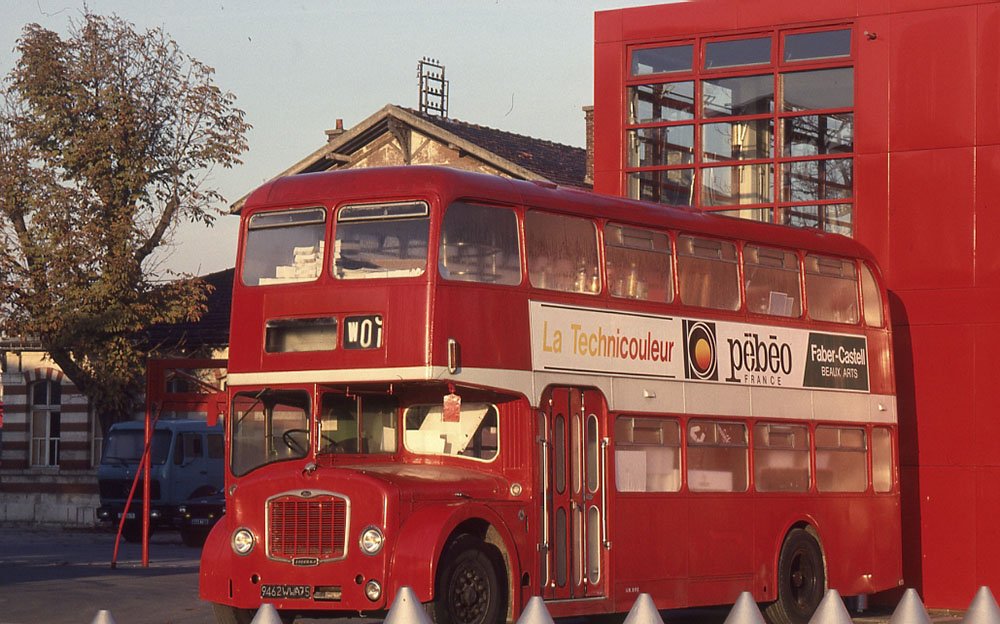
2011-2018 : Une décennie entre Recherche et Mécénat
Alors que la 4e génération fait son entrée chez Pébéo en la personne d’Antoine Chaveau, l’entreprise se tourne plus que jamais vers les artistes contemporains, à travers la multiplication de collaborations, d’actions de mécénat, l’organisation de concours et d’événements. Mécène de Monumenta au Grand Palais, mais aussi du Louvre.fr, Pébéo poursuit sa vocation pédagogique en développant à l’occasion des modules éducatifs : découverte d'œuvres, initiation à la création et aux techniques artistiques. L’espace Pébéo est inauguré à Géménos en 2012. Hommage vivant aux couleurs et à ceux qui les créent, ce site dédié à la médiation culturelle est une plongée dans les coulisses des inventions, de l’histoire et des talents de Pébéo. Les années suivantes, Pébéo y invite l’artiste japonais Tomosuke Nakayama (2014) puis c’est au tour de Yigit Yazici, peintre originaire d’Istanbul, de s’y installer en résidence (2015), à la source de la couleur. En 2013, Marseille est élue Capitale Européenne de la Culture. À cette occasion, Pébéo accueille Marie Angeletti, qui s’immerge au cœur de l’entreprise pendant près de six mois. Pensé comme un pont d’images entre les sites de Géménos et de Kunshan en Chine, le travail de l’artiste s’est penché sur le facteur humain de Pébéo, invitant ses employés à entrer dans le processus créatif d’une œuvre collaborative et autonome.Mécène par-delà les frontières, Pébéo inaugure à Londres un espace dédié à la peinture en 2014. Des artistes du monde entier y sont invités pour y découvrir les nouveaux produits brevetés de Pébéo. Les gammes “Fantasy Prisme”, “Fantasy Moon” et “Mixed Media” voient le jour à cette époque, tout comme les marqueurs “4Artist Marker” : une offre à la versatilité unique qui se voit une nouvelle fois récompensée par la Namta (2014) pour son caractère innovant. À travers ces gammes multisupports, l’entreprise repousse une nouvelle fois les limites de la créativité, en mettant son savoir-faire chimique au service de l’imaginaire de l’artiste. Contrairement au cloisonnement des techniques d’antan, ces nouveautés osent des confrontations jamais vues et une infinité d’applications, où la peinture se rétracte, se distend, se contorsionne dans un jeu de couleur et de texture inédit. Résines cristal, peintures vitrail, sertis plombés, feuilles d’or, couleurs à effet d’opalescence, de transparence, effet glacé, en superposition ou en relief proposent un voyage au cœur des couleurs, des matières et des sensations. Les possibilités sont telles que la création de ces gammes mène au lancement d’un magazine dédié, ainsi qu’au concours annuel “Mixed Media”, inauguré en 2016.
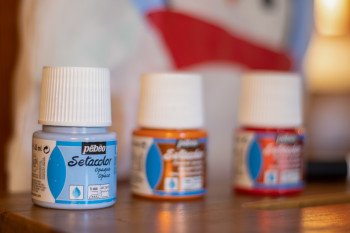
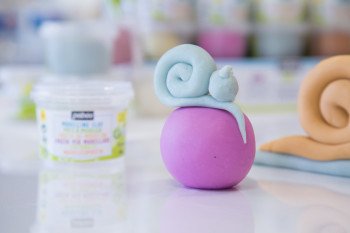
2019: Des couleurs à l’épreuve du temps
En cette année 2019, Pébéo célèbre un siècle de savoir-faire, de couleurs et d’innovations, au service de l’art, de la curiosité et de la créativité. Un siècle passé à se réinventer et à repousser les limites, avec pour seuls objectifs d’attiser les passions, de réveiller les sens, d’ouvrir les esprits à la couleur, aux matières et aux formes.Fort de son expérience dans le mécénat, c’est tout naturellement que cet anniversaire historique conduit Pébéo à l’organisation d’un concours international. L'événement, qui enregistre plus de 1 500 inscriptions, débouche sur une demi-finale à Paris, une finale à Londres et une exposition itinérante à travers la planète.Une succession de manifestations artistiques s'ensuivent dans les rues de Londres, où Pébéo convie une série d’artistes contemporains de renommée internationale à investir le quartier de Brick Lane à Shoreditch.Terrain de jeu unique et haut lieu du street-art, il accueille les œuvres de Frak One et Said Dokins, qui y présentent leur travail de calligraphie, ainsi qu’une fresque murale réalisée par Frank Pelegrino et Ludovilk Myers, réunis pour la première fois.L’artiste coréen Young-Sung Kim y organise une conférence sur sa pratique de l’hyperréalisme, tandis que Nancy Wood offre une plongée au cœur de sa technique sur la résine.Pour Pébéo, l’année 2019 est également l’occasion de parfaire sa vocation pédagogique. Animée par Fred de la chaîne BeauxArts.fr, la “Pébéo Art Academy” fait ses débuts sur Youtube. Astuces, conseils et tutoriels forment un panel de vidéos destinées aux artistes confirmés comme aux passionnés. Pour Pébéo, ce centenaire est placé sous le signe du développement durable. Accompagnant les artistes d’aujourd’hui comme ceux de demain, la maison inaugure une pâte à modeler 100% naturelle et ses premières encres végétales Bio. Respectueuses de l’enfant comme de l’environnement, elles sont formulées à base de pigments végétaux et minéraux, sont issues de l’agriculture biologique non-OGM, sont sans gluten, sans solvant, et 100% vegan. Plus que jamais déterminée à mettre son savoir-faire industriel au service de l’art, de la curiosité, et de l’épanouissement de chacun, Pébéo s’inscrit désormais dans une dynamique d’avenir, et son histoire s’écrit à travers les mains de chaque passionné.
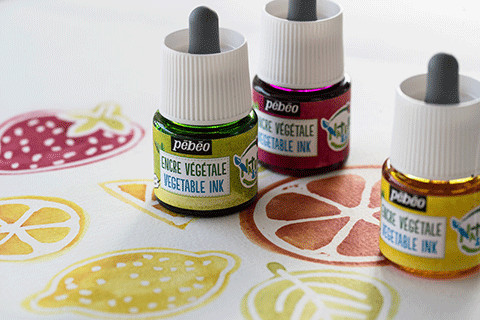
2020: Ultimate pouring medium
En 2O20 Pébéo lance sa gamme Ultimate pouring medium, une innovation élaborée avec l’artiste Nancy Wood, inventrice de cette technique. Après des années à chercher sa propre recette, l’artiste a pu développer avec l’aide des équipes Pébéo une formule qui permet d’obtenir des effets uniques mais contrôlables, qui se déclinent en 20 couleurs brillantes, fluorescentes, métalliques. Cette garantie de résultat va de pair avec l’ambition de rendre le Fluid Art accessible à tous. Une master class et des tutos sont depuis mis en ligne pour accompagner l’appropriation de cette technique.
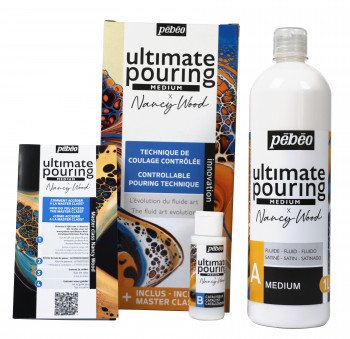
2021: Concours Pébéo Mixed Media
La 5ème édition du concours Pébéo Mixed Media, qui contribue depuis 2016 à la découverte de talents français et étrangers de la scène artistique contemporaine, a mis à l’honneur en 2021 l’Art urbain. Organisée en partenariat avec le centre d’art Fluctuart, cette édition a démontré le dynamisme de ce mouvement qui affectionne les techniques mixtes développées par Pébéo. 2021 a été également marquée par l’arrivée d’Antoine Chaveau à la tête de la direction commerciale du marché français, après neuf années consacrées à l’export chez Pébéo.
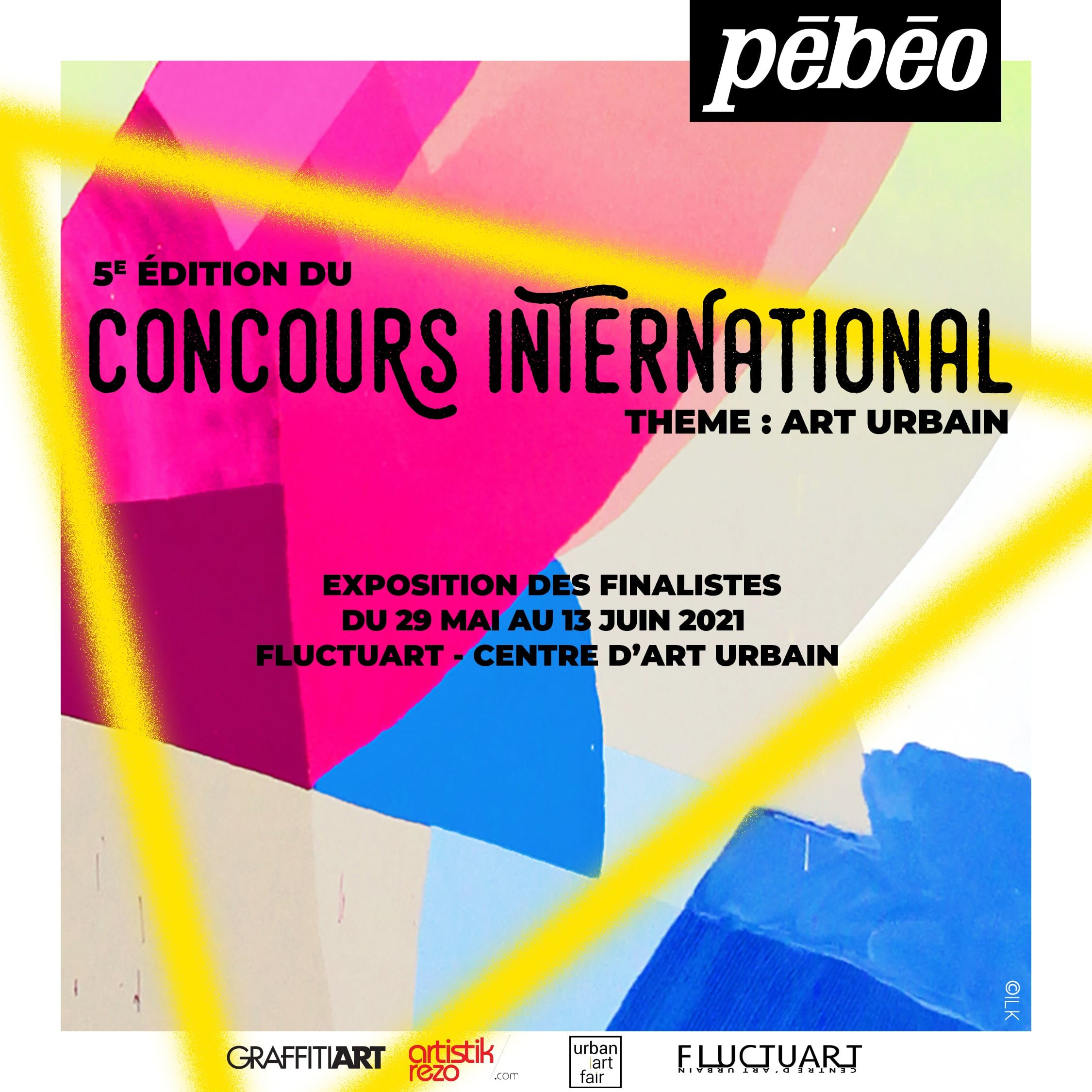
5ème édition
2024 : Un concentré d’innovation au service de la création : Origin
Pébéo lance sa nouvelle gamme révolutionnaire Origin: la première gamme acrylique éco-conçue.
Origin, est une gamme made in France avec 96% de matières premières d'origine européenne, un liant 100% recyclé, une formule sans odeur, un tube composé de 44% de papier, chaque tube est accompagné d'une touche de couleur véritable. Avec son nuancier classique et ses 48 couleurs incluant 3 types d'opacité : transparent, semi opaque et opaque et des couleurs classiques, métalliques, iridescentes et fluorescentes. Il confère une pureté et un éclat de mélange.
Une Gamme approuvée par les artistes !
Pébéo a sollicité un groupe d’artistes internationaI, quels que soient Ieur pratique artistique, des plus réalistes aux plus abstraits, qu’ils travaillent au couteau ou au pinceau. Tous ont en commun la conviction de la pertinence et de la nécessité de cette gamme Origin. Les artistes ont à cœur de s’exprimer durablement.
Origin, est une gamme made in France avec 96% de matières premières d'origine européenne, un liant 100% recyclé, une formule sans odeur, un tube composé de 44% de papier, chaque tube est accompagné d'une touche de couleur véritable. Avec son nuancier classique et ses 48 couleurs incluant 3 types d'opacité : transparent, semi opaque et opaque et des couleurs classiques, métalliques, iridescentes et fluorescentes. Il confère une pureté et un éclat de mélange.
Une Gamme approuvée par les artistes !
Pébéo a sollicité un groupe d’artistes internationaI, quels que soient Ieur pratique artistique, des plus réalistes aux plus abstraits, qu’ils travaillent au couteau ou au pinceau. Tous ont en commun la conviction de la pertinence et de la nécessité de cette gamme Origin. Les artistes ont à cœur de s’exprimer durablement.
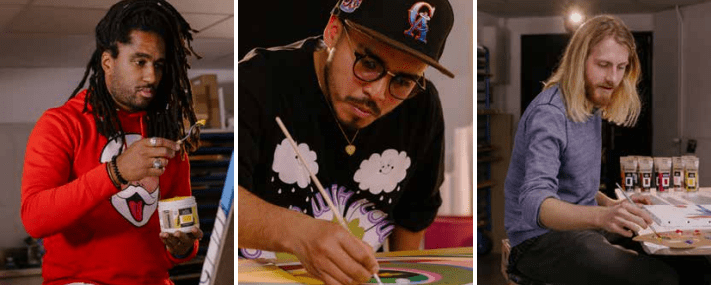
Raphael Federicî
Yandy Graffer
Lukas Zimmermann
Yandy Graffer
Lukas Zimmermann
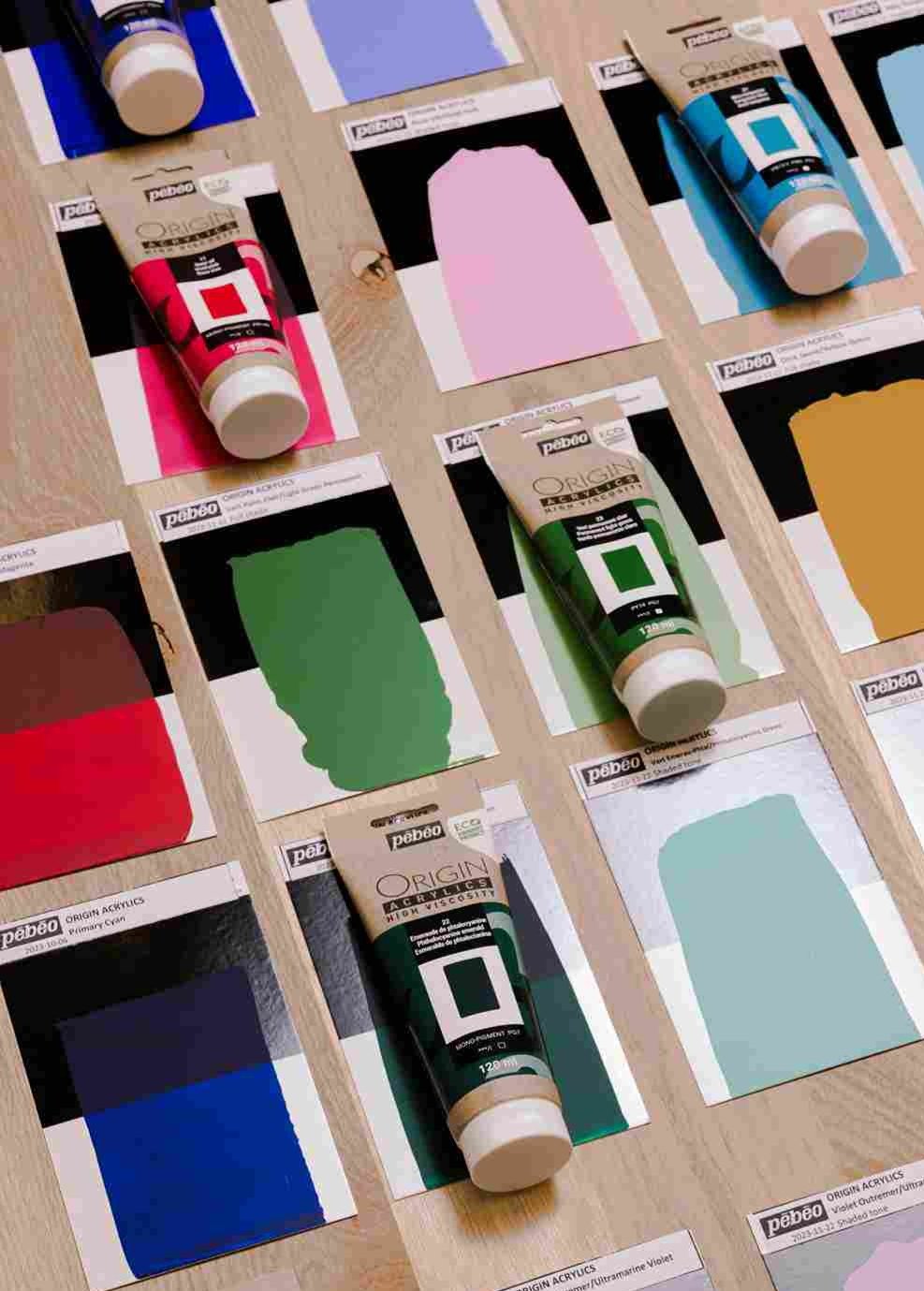
* 100 % de liant recyclé
* 59 % de réduction plastique
* 96 % de matières premières d'origine européenne
* 44 % de papier dans la composition du tube
* 90 % de couleurs très solide à la lumière
* 50 % du nuancier en couleurs mono-pigmentaires
* 59 % de réduction plastique
* 96 % de matières premières d'origine européenne
* 44 % de papier dans la composition du tube
* 90 % de couleurs très solide à la lumière
* 50 % du nuancier en couleurs mono-pigmentaires
@PEBEO Suivre Pébéo sur Instagram
Newsletter
Inscrivez-vous à notre Newsletter et restez informé de nos actualités. Pour en savoir plus sur la gestion de vos données personnelles et pour exercer vos droits, cliquez, ici
